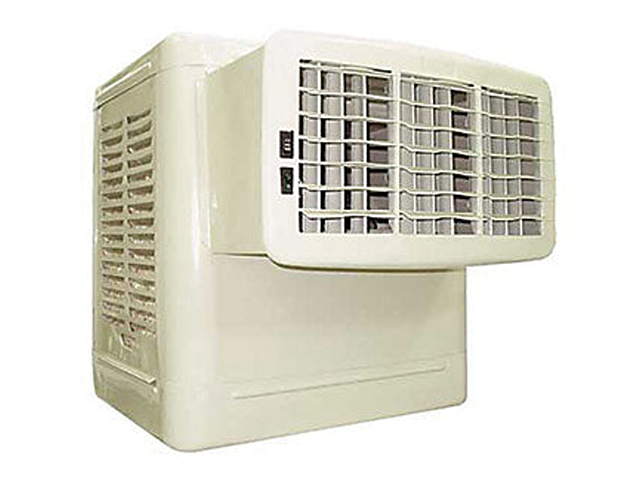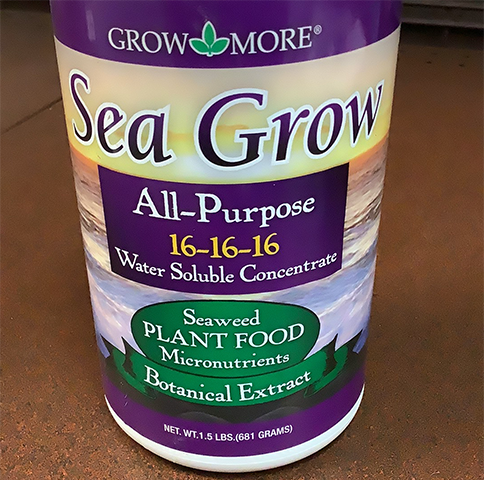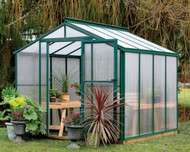9 Easy To Grow Greenhouse Plants For Beginners
Nothing says green thumb quite like nurturing plants in your own little oasis.
Greenhouses protect plants from extreme weather and let you adjust humidity levels. But when you’re a beginner, deciding what to plant in your greenhouse can feel daunting.
To help you get started, we’ve compiled a list of nine easy-to-grow greenhouse plants ideal for beginners. This way, you can enjoy the benefits of your greenhouse garden without feeling overwhelmed.
Deciding What to Grow
When figuring out what to plant in your greenhouse, start by learning the microclimate it creates. You’ll want to consider temperature, light, water availability, humidity, and soil type, as these affect how well plants grow. Understanding these factors will help you pick plants suitable for your greenhouse conditions.
Temperature
Different plants have specific temperature requirements for optimal growth. Many warm-season crops, such as tomatoes and peppers, benefit from the consistently warm temperatures that a greenhouse can provide. These plants typically require daytime temperatures between 70°F and 80°F and nighttime temperatures above 60°F.
Cold-weather crops like lettuce, spinach, and radishes prefer slightly cooler conditions. Ideal temperatures range from 50°F to 60°F during the day and slightly lower at night.

A reliable thermometer is an indispensable tool for managing your greenhouse. Our Jumbo Hygro-thermometer provides accurate and easy-to-read temperature readings, allowing you to monitor your greenhouse environment closely. If your greenhouse experiences temperature fluctuations, consider installing a greenhouse thermostat or a powered ventilation system to maintain optimal conditions.
Light and Shade
Most plants require at least six hours of direct sunlight daily to thrive, but some may need partial shade, especially during the hottest parts of the day. Too much direct sunlight can lead to leaf scorching and stunted growth, while too little light can result in spindly, weak plants.

Install a shade cloth during peak sunlight hours to ensure your plants receive adequate light without burning. Our Lockknit shade fabric kit comes in a 60% density option, allowing you to reduce your plant’s temperatures by up to 15°F.
Irrigation and Humidity Control
Proper watering is vital for greenhouse vegetables and flowering plants. Over-watering can lead to root rot, fungal diseases,and other moisture-related issues, while under-watering can stunt growth and cause plants to wilt and become stressed.
Investing in a good watering system can ensure your garden’s success. Our professional misting system delivers water directly to the plant’s root zone, minimizing evaporation and promoting efficient water usage.

Maintaining appropriate humidity levels is also essential, as dry air can stress plants and limit their growth. Our Dayton evaporative cooler can help regulate humidity within your greenhouse, creating a comfortable environment for your plants to flourish.
Soil Composition and Nutrient Management
Healthy soil contains all the nutrients your plant needs for proper growth and fruit development. Greenhouse plants require a well-draining, moisture-retentive potting mix. Our Soil Moist Plus granules store and gradually release water at your plants’ roots, reducing the frequency you need to irrigate your plants.

To supplement your soil and restore depleted nutrients, you need to invest in a high-quality fertilizer. Regularly feeding your plants with a balanced fertilizer, like our Sea Grow all-purpose mix, ensures they have the necessary nutrients to thrive. A soil testing kit can also help monitor pH and nutrient levels to identify deficiencies you need to address.
9 Easy-to-Grow Greenhouse Plants for Beginners
If you’re new to greenhouse gardening, starting with plants that are easy to grow can make your experience enjoyable and successful. The following is a list of nine plants that are perfect for beginners; they require minimal special care and can grow easily in the controlled environment of a greenhouse.
Tomatoes
Tomatoes are ideal for novice gardeners because they grow quickly and produce abundant yields. However, you need to maintain a consistent soil moisture level to avoid issues like blossom end rot, which can occur because of calcium deficiency.
You also need to support the tomato vines with trellises and prune them regularly to boost airflow and prevent diseases like early blight caused by stagnant, humid conditions.
For better yields, stick with prolific cherry or Roma tomato varieties. Bite-sized charmers like Sweet 100 and Sun Gold are perfect for snacking or salad-topping fruit in rainbow hues. Romas, like the iconic San Marzano, have dense, seed-free flesh that is great for sauces and drying and is prized for its rich, concentrated tomato essence.
Implement a nutritious fertilizing regimen to fuel lush, productive tomato plants. An organic fish emulsion or seaweed extract provides an optimal nutrient boost during the growing season. Add calcium-rich supplements like greensand or gypsum to prevent blossom end rot, improve nutrient uptake, and increase production as fruits grow.
Lettuce
Crisp lettuce enjoys the cooler temperatures and filtered sunlight of a greenhouse environment. Keep the soil moist, but add some pumice or perlite to increase drainage and prevent rot and sogginess. Amend with compost to improve drainage if needed. Ensure you harvest the outer leaves frequently to promote fresh growth and a continuous supply of fresh greens year-round.
Look no further than Buttercrunch and crisp, nutrient-dense romaine for exceptional leaf lettuce quality. Buttercrunch lives up to its name with a velvety texture and delightfully sweet flavor reminiscent of savoy cabbages.
Romaine’s sturdy, crunchy ribs and ruffled green leaves pack a vitamin-rich punch, making it a nutritious addition to salads and sandwiches. Both varieties perform best when sown or transplanted once greenhouse temperatures are in the ideal range.
Maximize your harvest by using succession planting—sow fresh crops every 2-3 weeks. This keeps new seedlings continually on the way to replace spent plants. In summer’s heat, add a shade cloth to filter intense sunlight and prevent premature bolting.
Cucumbers
Cucumbers are bountiful vines that grow well in sunny, warm greenhouse conditions. Provide them with soil enriched with aged compost or manure and maintain consistent moisture through drip irrigation or mulching.
For a classic slicing cucumber, consider the high-yielding MarketMore 76 or the disease-resistant Straight Eight. If you prefer smaller, snack-sized cucumbers, the prolific Patio Snacker or the crisp, sweet Muncher are excellent choices.
Once fruiting begins, ensure that you feed plants regularly with organic fertilizer. Harvest frequently when they reach the desired size for optimal flavor and texture, as leaving them on the vine can cause bitterness and tough skin.
Peppers
Peppers are ideal plants for growing inside a greenhouse, provided they get plenty of soil enriched with organic matter. Avoid over-watering to prevent plant diseases like root rot, and stake or cage plants to support heavy-laden branches.
Consider heavy-yielding varieties like California Wonder or the richly flavored Chocolate Beauty for standard bell peppers. The Habanero Orange is an excellent choice for a spicy pepper, offering a blend of heat and flavor that can add a kick to your dishes.
Provide peppers with fertile soil enhanced with aged compost or manure and maintain consistent moisture with drip irrigation or mulch. Feed young plants regularly with an organic vegetable fertilizer once fruiting initiates. In peak summer heat, shade cloth can help prevent sunscald on fruits.
Radishes
Quick-growing radishes are the ideal greenhouse plants for cooler temperature zones. You’ll need to keep the soil consistently moist to prevent woody or pithy texture issues and thin seedlings properly for ideal bulb sizing. Two exceptional picks are the round Cherry Belle and elongated French Breakfast types.
Cherry Belle lives up to its name, yielding small, globular radishes with a crisp, mild bite in just 25 days—perfect for impatient gardeners or kids trying out their green thumb. French Breakfast radishes feature a striking contrast of colors and flavors, blending spicy heat with a delicate sweetness in each elongated root, which sports a vibrant red top that fades into white.
For the best results, direct sow every 2-3 weeks for a continuous supply, and supplement the soil with compost or manure before planting. Use grow lights if sunlight is limited in your location, as radishes need abundant bright light to produce high-quality roots.
Herbs
No greenhouse is complete without a fragrant herb garden providing zesty, fresh flavors year-round. Basil, parsley, and cilantro grow best in a potting mix that contains peat moss or vermiculite for optimal drainage with frequent harvesting to promote growth and delay bolting.
Basil needs a greenhouse’s consistent warmth to promote plenty of leafy growth. Grow Genovese for unbeatable pesto and Caprese salads, or explore Thai basil’s spicy-sweet aroma—it’s outstanding in Southeast Asian curries and stir-fries.
For a novel twist, try citrusy Lemon or purple-hued Red Rubin basils to accent your dishes with vibrant color. With parsley, Flat-leaf (Italian) has intense flavors preferred for cooking, while Curly parsley’s frilly good looks make a stunning garnish.
Cilantro’s zesty citrus notes can’t be beaten for authentic Mexican, Indian, and Southeast Asian cuisines. Just resow every few weeks to ensure a steady supply of tender, fresh growth before it bolts in the summer months.
For herb garden success, use a premium potting mix and feed regularly with a balanced organic fertilizer like fish emulsion. Maximize air circulation with a fan and vent humidity levels daily to prevent fungal disease.
Zucchini
Zucchini plants need breathing room as their sprawling vines can easily take over your greenhouse benches. They also benefit from regular pruning to maximize airflow and minimize disease risks. Consistent moisture prevents deformities, while frequent harvesting at a petite 6-8" size ensures tender, flavorful produce without becoming overgrown and bland.
Space-saving bushier varieties like Balmoral yield abundantly in a greenhouse without taking up much space. For a unique presentation, try growing globe-shaped zukes like Eight Ball or Ronde de Nice—their round, green fruits resemble miniature pumpkins, making them an excellent option for stuffing or grilling.
Add organic fertilizer regularly to fuel productivity and apply a 2-3" mulch layer to retain soil moisture. Use reflective mulches like aluminum foil or plastic underneath the vines to bounce light up into the plant canopy, enhancing photosynthesis and yields.
Spinach
With its preference for cool, partially shaded conditions, spinach is the perfect greenhouse crop. Keep the soil moist and harvest the outer leaves often to stimulate tender new growth throughout the season.
For nutrient-packed harvests, you can’t miss with Bloomsdale or savoy types. Bloomsdale is a semi-savoy selection with exquisitely crinkled, dark emerald leaves and rich, signature spinach flavor. Savoy cultivars like Olympia flaunt heavily crinkled leaves and tender stems, making them great for fresh salads and sautés.
When preparing planting beds, ensure a successful crop by mixing in generous amounts of nutrient-rich compost or aged manure. Consistent nitrogen fertilization promotes lush leaf growth and prevents premature bolting. In warm weather, use shade cloth to recreate spinach’s preferred partially shaded environment.
Strawberries
Strawberries bloom under warm greenhouse conditions, rewarding you with endless sweet, juicy berries. Plant them in nutrient-rich soil amended with compost, vermiculite, or perlite to ensure air circulation to roots. Provide ample sunlight exposure—a minimum of six hours daily is ideal.
Choose ever-bearing or day-neutral cultivars like San Andreasor Albion to ensure a steady supply rather than just a fleeting early-summer crop. Ever-bearers start flowering from early spring until fall’s first frosts, while day-neutrals bear fruit in flushes every 3-4 weeks without being day-length dependent.
For maximum productivity, grow strawberries in raised beds or hanging pots to maximize sunlight exposure and minimize disease and pest issues. Remove runners to direct energy into fruit production and drip irrigation or automatic watering systems at the roots to keep moisture levels ideal.
Pest and Disease Control in Your Greenhouse
While greenhouses provide a controlled environment for nurturing plants, they can also become a haven for pests and diseases if improperly managed. Implementing preventative measures is key to maintaining a healthy plant population.
For effective control over the pest population in your greenhouse, consider using our Monterey garden insect spray, a safe B.T. replacement for organic gardening.

Fungal diseases like powdery mildew and botrytis can also pose a threat in greenhouses with high humidity. In cases of outbreaks, a fungicide like Physan all purpose disinfectant or a neem oil concentrate can also help control these issues.
Get Started on Your Greenhouse Today!
Charley’s Greenhouse and Garden is your one-stop destination for all your greenhouse needs, offering a wide range of high-quality products and professional advice.
From
sturdy greenhouse structures to advanced growing accessories, our selection ensures you have everything you need to create the perfect environment for your greenhouse plants. Explore our extensive range today and unlock the potential for year-round gardening success!

